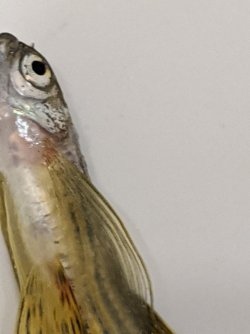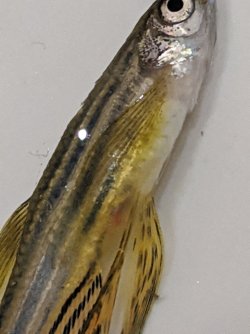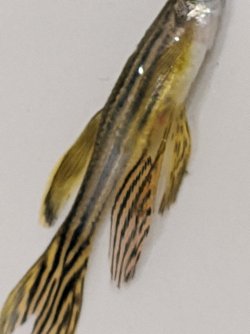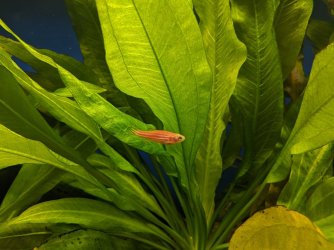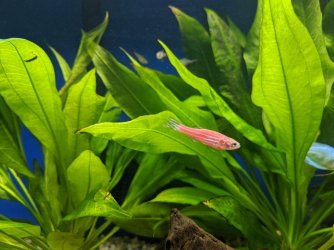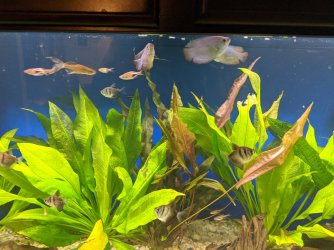Dave B.
New Member
Thanks for reading. Requested information below. Looking to see if my amateur diagnosis seems correct and how I should treat the fish and display tank. I have a 30 Gal tank and Fluval 306 filter I could set up as a QT, but still would need to treat the planted 75 Gal display tank.
Tank size: 75 Gal with Fluval FX4 filter (upgraded from an established 55 Gal a month ago)
pH: 7.6 (Hard to be exact since it is between the standard high/low PH test scales)
ammonia: 0
nitrite: 0
nitrate: 5
kH: unknown
gH: unknown
tank temp: Initially 76 F, raised to 83.5 F based on reading online treatments
Fish Symptoms: Longfin Zebra Danio died off. Fins turned partly yellow, some flashing. Stayed at the top of the tank toward the end - possibly gulping air, but I didn't notice. Concerned that the tank has Oödinium infestation.
Volume and Frequency of water changes: 15 Gal every other week
Chemical Additives or Media in your tank: Just API Stress Coat at this point. Am considering Chloramine Phosphate or Coppersafe
Tank inhabitants: 1 Black Neon Tetra, 1 (remaining) Longfin Danio, 1 Golden Zebra Danio, 3 Bandit Cory, 2 Albino Cory, 6 Harlequin Rasbora, 1 Bristlenose Pleco, 4 Dwarf Gourami, 6 Black Skirt Tetra, 6 Glolight Tetra, 6 Bloodfin Tetra, 1 Farlowella Cat, a few Assassin Snails, several Sword-type plants
Recent additions to your tank (living or decoration): Glolight Tetra, Bloodfin Tetra, & Farlowella Cat are recent additions, but we had a slow, progressive die-off in the previous 55 Gal tank that held many of the other fish prior to these fish arriving. That could have been the same problem or a different problem.
Exposure to chemicals: none known
Digital photo (include if possible): These are of the deceased fish. The white spots are light reflections, not actual spots on the fish.
Tank size: 75 Gal with Fluval FX4 filter (upgraded from an established 55 Gal a month ago)
pH: 7.6 (Hard to be exact since it is between the standard high/low PH test scales)
ammonia: 0
nitrite: 0
nitrate: 5
kH: unknown
gH: unknown
tank temp: Initially 76 F, raised to 83.5 F based on reading online treatments
Fish Symptoms: Longfin Zebra Danio died off. Fins turned partly yellow, some flashing. Stayed at the top of the tank toward the end - possibly gulping air, but I didn't notice. Concerned that the tank has Oödinium infestation.
Volume and Frequency of water changes: 15 Gal every other week
Chemical Additives or Media in your tank: Just API Stress Coat at this point. Am considering Chloramine Phosphate or Coppersafe
Tank inhabitants: 1 Black Neon Tetra, 1 (remaining) Longfin Danio, 1 Golden Zebra Danio, 3 Bandit Cory, 2 Albino Cory, 6 Harlequin Rasbora, 1 Bristlenose Pleco, 4 Dwarf Gourami, 6 Black Skirt Tetra, 6 Glolight Tetra, 6 Bloodfin Tetra, 1 Farlowella Cat, a few Assassin Snails, several Sword-type plants
Recent additions to your tank (living or decoration): Glolight Tetra, Bloodfin Tetra, & Farlowella Cat are recent additions, but we had a slow, progressive die-off in the previous 55 Gal tank that held many of the other fish prior to these fish arriving. That could have been the same problem or a different problem.
Exposure to chemicals: none known
Digital photo (include if possible): These are of the deceased fish. The white spots are light reflections, not actual spots on the fish.

